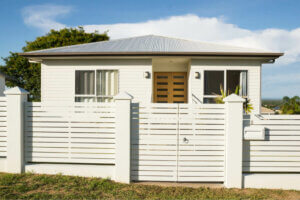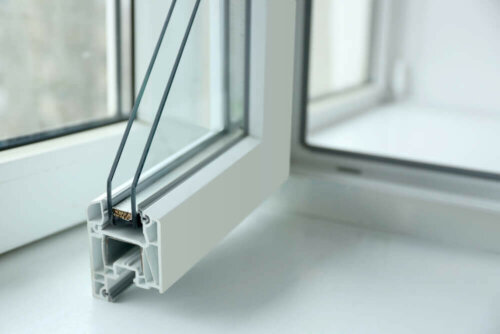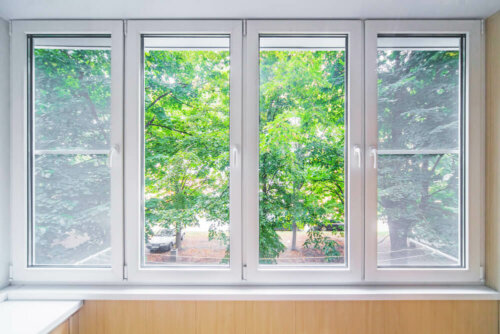Enclosures: Everything You Need to Know

Enclosures can be expensive, but they are also a great solution for small spaces. So before you get into this, you need to consider the problems of different types of enclosures.
If you choose the right option for you, you’ll avoid headaches and your house will look great. Let’s take a look at some of the issues below.
Types of enclosures – questions and answers

Aluminum or PVC?
These are the two most common materials because they’re good thermal and acoustic insulators. In addition, they are also durable and don’t require much maintenance.
However, there are some differences between them. Both can be colored, but aluminum has a wider range of options and is compatible with lacquering or anodizing techniques.
Also, keep in mind that aluminum frames are narrower than PVC. With PVC, you lose some of the light, but they are more resistant.
In terms of decoration, the best advantage of aluminum is that you can combine it with wood. For example, we recommend installing aluminum facing out towards the street and wood inside.
Which method of opening is best?
The choice of opening for different types of enclosures depends on whether you can access it from outside the house. This is essential to take into account because it will be a big factor in your decision.
One practical system for opening is a traditional window with one or two leaves that open towards the interior of the house. This is also the most insulating option.
A tilt-and-turn can also be a good option and has lots of advantages. These can be opened at the top to ventilate your room without drafts.
Sliding windows are the best choice if you want to save space. However, these are less watertight so don’t install these in places where you can’t access them from the outside.
Finally, folding windows have the advantage that the panes fold in the center or on the sides. These take up less space, but again, they are less watertight.
Roof material for types of enclosures
On balconies, there’s no real choice because the top floor acts as the roof. However, when it comes to an uncovered terrace, you can consider a sandwich panel or glass.
With a sandwich panel, you can place a false ceiling of plasterboard with wool insulation, a metallic structure, the sandwich panel of sheet metal and polyurethane, some insulating plates, and finally, some tile or slate.
The glass panel has to be secure and can be fixed or mobile. The disadvantage is that this can cause a greenhouse effect and you need to make sure to use special glass to protect against heat and cold.

What glass can you use for different types of enclosures?
PVC or aluminum frames are useless if you’re not using double glazed glass with an air chamber. This is the only way to make sure heat and cold don’t escape.
In these types of windows, first, there is insulating glass of about 4mm. Then, there is a 6-12 mm air chamber followed by another 4 mm sheet of glass. This is how to get the results you’re looking for.
In easily accessible enclosures, it’s best to install safety glass that is anti-theft or shockproof. The downside is that this type of glass is quite expensive.
How to avoid heat and cold
Although glass is an insulating material, it’s insufficient to protect the interior of the enclosure from heat or cold. So if your enclosure is connected to the rest of the house, it’s best to adapt the heating and air conditioning to the new space.
Another way to prevent the sun’s rays from creating a greenhouse effect is to place an awning on all the walls of the enclosure. Or you could consider installing windows with shutters.
Are there laws against making certain types of enclosures?
Some city council regulations prevent enclosures because they modify the facade of the house. However, in reality, you can close in terraces generally by taking advantage of legal loopholes.
However, once you make an enclosure, it’s difficult to remove it so make sure it’s something that you really want before you take the leap!
Of course, it’s also always best to ask permission from your neighborhood or community before carrying out any construction work to avoid any issues.
We hope we’ve cleared up any of your questions about different types of enclosures, but if you have any others, feel free to leave them below!
Enclosures can be expensive, but they are also a great solution for small spaces. So before you get into this, you need to consider the problems of different types of enclosures.
If you choose the right option for you, you’ll avoid headaches and your house will look great. Let’s take a look at some of the issues below.
Types of enclosures – questions and answers

Aluminum or PVC?
These are the two most common materials because they’re good thermal and acoustic insulators. In addition, they are also durable and don’t require much maintenance.
However, there are some differences between them. Both can be colored, but aluminum has a wider range of options and is compatible with lacquering or anodizing techniques.
Also, keep in mind that aluminum frames are narrower than PVC. With PVC, you lose some of the light, but they are more resistant.
In terms of decoration, the best advantage of aluminum is that you can combine it with wood. For example, we recommend installing aluminum facing out towards the street and wood inside.
Which method of opening is best?
The choice of opening for different types of enclosures depends on whether you can access it from outside the house. This is essential to take into account because it will be a big factor in your decision.
One practical system for opening is a traditional window with one or two leaves that open towards the interior of the house. This is also the most insulating option.
A tilt-and-turn can also be a good option and has lots of advantages. These can be opened at the top to ventilate your room without drafts.
Sliding windows are the best choice if you want to save space. However, these are less watertight so don’t install these in places where you can’t access them from the outside.
Finally, folding windows have the advantage that the panes fold in the center or on the sides. These take up less space, but again, they are less watertight.
Roof material for types of enclosures
On balconies, there’s no real choice because the top floor acts as the roof. However, when it comes to an uncovered terrace, you can consider a sandwich panel or glass.
With a sandwich panel, you can place a false ceiling of plasterboard with wool insulation, a metallic structure, the sandwich panel of sheet metal and polyurethane, some insulating plates, and finally, some tile or slate.
The glass panel has to be secure and can be fixed or mobile. The disadvantage is that this can cause a greenhouse effect and you need to make sure to use special glass to protect against heat and cold.

What glass can you use for different types of enclosures?
PVC or aluminum frames are useless if you’re not using double glazed glass with an air chamber. This is the only way to make sure heat and cold don’t escape.
In these types of windows, first, there is insulating glass of about 4mm. Then, there is a 6-12 mm air chamber followed by another 4 mm sheet of glass. This is how to get the results you’re looking for.
In easily accessible enclosures, it’s best to install safety glass that is anti-theft or shockproof. The downside is that this type of glass is quite expensive.
How to avoid heat and cold
Although glass is an insulating material, it’s insufficient to protect the interior of the enclosure from heat or cold. So if your enclosure is connected to the rest of the house, it’s best to adapt the heating and air conditioning to the new space.
Another way to prevent the sun’s rays from creating a greenhouse effect is to place an awning on all the walls of the enclosure. Or you could consider installing windows with shutters.
Are there laws against making certain types of enclosures?
Some city council regulations prevent enclosures because they modify the facade of the house. However, in reality, you can close in terraces generally by taking advantage of legal loopholes.
However, once you make an enclosure, it’s difficult to remove it so make sure it’s something that you really want before you take the leap!
Of course, it’s also always best to ask permission from your neighborhood or community before carrying out any construction work to avoid any issues.
We hope we’ve cleared up any of your questions about different types of enclosures, but if you have any others, feel free to leave them below!







